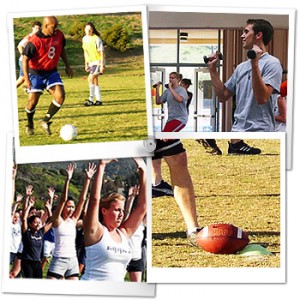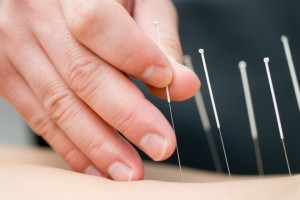The problem with running and walking in 2012… an evolutionary point of view…by a natural health practitioner
– Written by Nick Milton
For those of you who like to run or who have chosen a sport that involves running, it’s getting to that time of year when you’ll be increasing your activity more and more as the ever elusive spring gets closer to arriving.
From working with various athletes over the years I’ve become accustomed to seeing a wide range of problems in the upper and lower extremities. When it comes to running, either in sport, or as a hobby in itself, it’s important to remember that some precautionary measures are vitally important, after all, we weren’t evolutionary designed to be walking or running on hard surfaces.
Fundamentally our feet and ankles work at their best walking or running on sand, vegetation and earth. Hundreds of thousands of years ago we were running barefoot whilst hunting to survive, much as some tribes in Africa still do today. These surfaces have more shock absorbing qualities and allow for the curves of our feet to mould around whatever we are stepping upon. This in turn, takes the stress off our joints, their articulations and the muscles and ligaments which support them. The truth is our bodies have not developed any new strategies to cope with all the hard surfaces which are common place these days, so we need to use our common sense to prevent it becoming a problem. Even simple standing or walking for your job all day can cause problems in the long run.

Photo Credit: paherald.sk.ca
Of course, doing an adequate warm up and being diligent about stretching pre and post activity will all help, but there are a few other things you should bear in mind.
As most healthcare practitioners and the more serious runners out there will tell you, it’s vitally important to have high quality and supportive footwear which can absorb some of the energy created whilst you’re pounding the pavement/concrete/tarmac. If you are really serious about your sport I also highly recommend investing in custom orthotics which allows your individual foot shape to work at its absolute optimum. The common misconception about orthotics is that they correct bio-mechanical problems when in fact they merely are designed to adapt to your particular foot shape and gait. These things need to be assessed by a qualified individual who has access to the newest technology. Orthotics off the shelf will simple not suffice, they are in fact (in my opinion) not likely to help you at all.
If you would like to prolong your activity in running or any other sport it is also extremely important to have your feet, ankles, knees, hips and spine checked for any bio-mechanical dysfunction. It’s no different from having your teeth checked or taking your car for a tune up. Please don’t be fooled by thinking that if there is no pain – then everything is fine, this thinking will increase your chances of injury and will prevent you from reaching your full potential.
The nerves which control the lower limb and its various muscles and joints originate from the lower back,and any pressure on them as they exit the spinal cord (which could be caused by something simple like poor posture) or on their course down through your pelvis and legs can cause a wide range of problems. It’s highly important to insure this is not the case before embarking on prolonged periods of physical activity, as this will improve your co-ordination, proprioception, strength and reduce fatigue.
Did I also mention chiropractors don’t just specialize in backs? We recognize and advocate that it’s definitely a huge part i.e. to release pressure from the nervous system for best communication between brain and body. Please understand that we also have very thorough training in orthopaedic problems and we spend years learning how to release tension from the joints, muscles and nerves of the extremities as well as the spine. I promise you’d be surprised by how simple and effective our treatments are for these kinds of problems.
Here at Diversified Health we are well trained and superbly equipped to help you with all your health requirements whether that’s rehabilitation after an injury or prevention of it in the first place. I certainly know which one I prefer!!
 Making a decision to begin exercising is the easy part, committing to your program is the hard part; so remember to ask your healthcare practitioner before starting an exercising program.
Making a decision to begin exercising is the easy part, committing to your program is the hard part; so remember to ask your healthcare practitioner before starting an exercising program.






